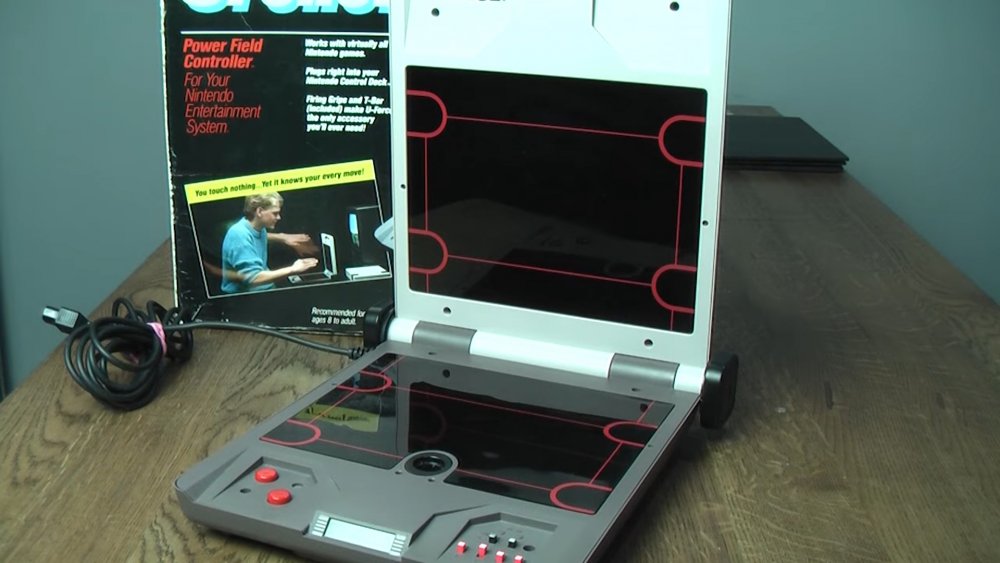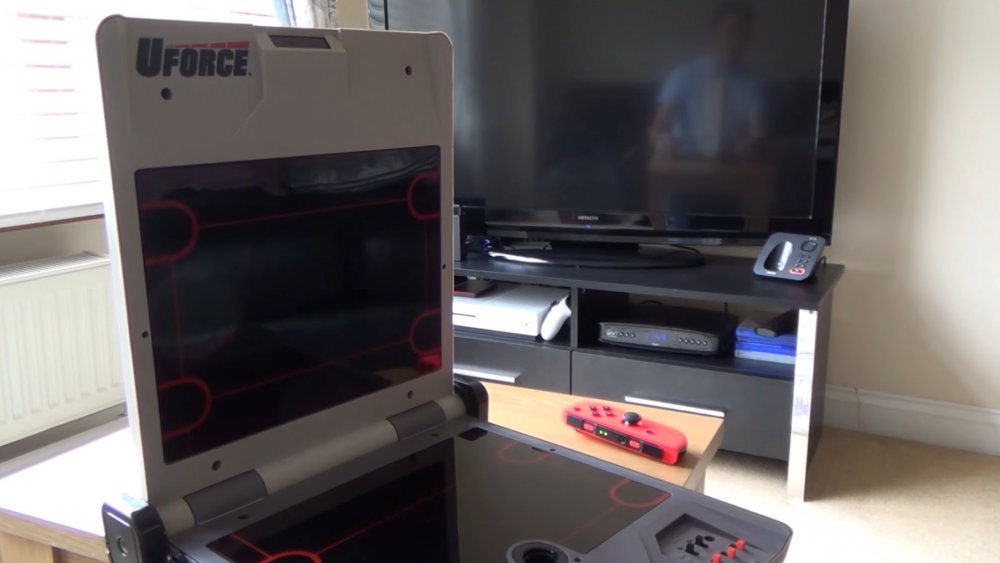The NES Had Motion Controls And You Probably Didn't Realize It
Ever since the Nintendo Wii normalized motion controls in video games, Nintendo has been looking at ways to transform the user experience. From the failed attempt at revolutionizing a console controller with the Wii U to the successful merging of home and portable gaming with the Switch, Nintendo has done a lot to change the way gamers play. It wasn't the Wii, however, that first brought motion controls to the public.
The Nintendo Entertainment System was itself a major revolution that resurrected America's dying video game market, but it was not without some pretty bizarre and questionable peripherals. Many are aware of the infamous Power Glove prominently featured in The Wizard, and of course, the loveable R.O.B the Robot.
Beyond those more recognizable NES accessories, a number of third-party peripherals made their way onto the console. Most failed to add anything to the experience, though some were technologically impressive for their time. One accessory, however, actually brought motion controls to the Nintendo Entertainment System.
Bringing motion controls to the NES with U-Force
Released in 1989, the U-Force allowed players to control their games with the wave of a hand. The device used infrared technology to sense a user's gestures, which would then translate into on-screen actions.
Kotaku's Luke Plunkett compared the U-Force to a "futuristic version of Battleship (or a GIANT Nintendo DS)." He also expressed, after having a hands-on demonstration with the antique novelty device, how dysfunctional it is as a controller.
Plunkett described the chance of successfully executing commands with the U-Force as "something akin to sorcery." This motion-control add-on, he explained, is very inconsistent when it comes to actually picking up motion.
The U-Force retailed for $70, which was no small fee in 1989. Considering how poorly it worked, it was a pretty sizable waste of money. As Plunkett pointed out, however, the U-Force may have been an oddity, but it did play a role in the advancement of motion controls. If nothing else, it provided a perfect example of what not to do when designing a movement-based controller.


